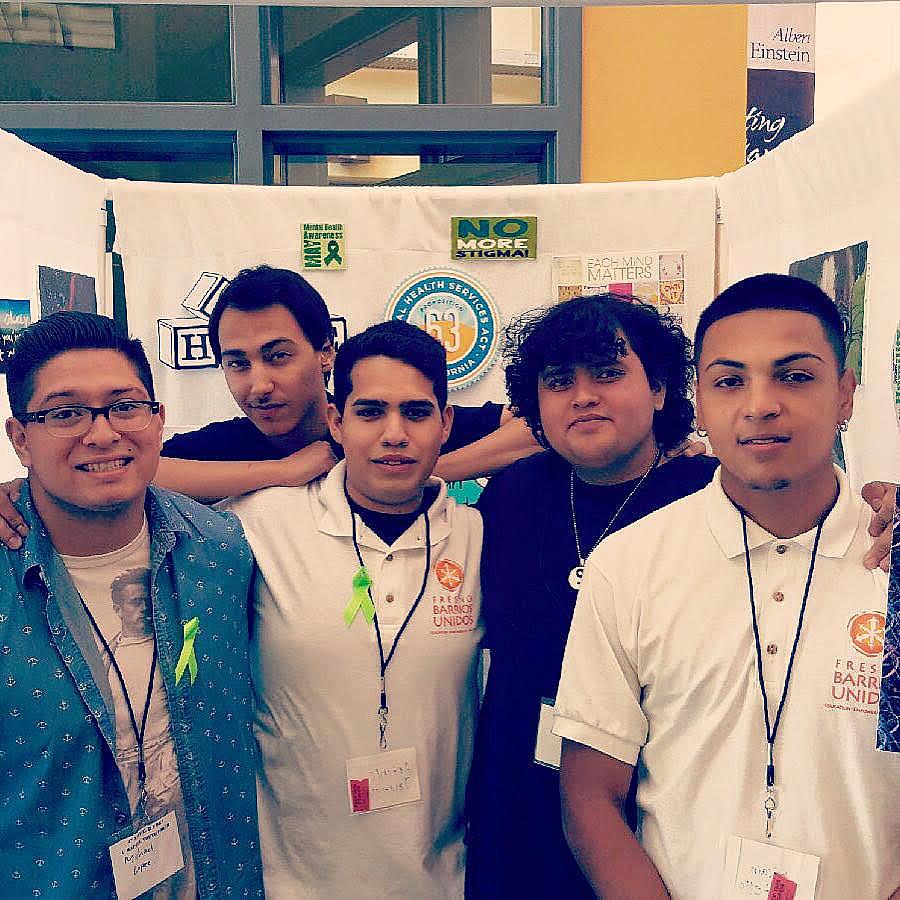In Calif.’s Central San Joaquin Valley, old-fashioned outreach key to expanding health care's reach

Members of Fresno Barrios Unidos’ promotores de salud team have spent the past two years working to educate fellow young men of color about the importance of health care coverage. (Photo courtesy of Fresno Barrios Unidos)
Having grown up in California’s Central San Joaquin Valley, I thought I had a good handle on the common hurdles members of my community faced in accessing proper health care — from a lack of physicians serving their area to limited clinic hours and locations. I also knew the Affordable Care Act had been in effect for several years and figured that by now, many of those hurdles would have been addressed or at least diminished.
As I learned during my summer of reporting on health care access, that assumption was wrong.
Hundreds of thousands of residents up and down the Valley continue to face the same persistent obstacles in accessing health care. Many of these challenges are rooted in the rural nature of their towns, but those living in the region’s larger cities of Fresno and Visalia also continue to encounter barriers to care. Throughout my reporting, I found that while the changes created by the ACA have moved the needle slightly, the dream of proper health care hangs just beyond the reach of many within our communities.
The sad irony is that these populations often stand to benefit the most from more health care resources since they often have been without care for long periods of time. Chronic diseases like asthma and diabetes, which are usually manageable with proper care and consistent treatment, frequently balloon into more serious health problems for those in low-income and underserved communities.
While this reality is not necessarily a secret, I found the traditional media coverage of uninsured populations in my area had yet to do their stories justice. As I launched into my reporting for this project, I noticed that the scope of my story began to change. The more people I spoke with, the more I wanted to focus on the actual stakeholders and their advocates within the larger community.
Originally I had intended to address several business-focused stories within the health care industry, including the rapid growth of additional clinic sites by some of the Valley’s largest providers. But the more reporting I did on the story, the more I felt motivated by the human element.
Health care is an enormous industry, but the effects are uniquely personal. I decided to keep my focus at the human level for my first story, honing in on the face-to-face interactions between community health advocates and the populations they serve.
Despite the savvy social media campaigns associated with ACA and Covered California, I found that many of the most effective outreach tools at play in the Valley involve very little technology. Some of the more successful health advocate and enrollment groups I spoke with for the second second part of my story relied upon their long-standing relationships with local communities and personal relationships with individuals and families. Many went above and beyond the basic duties of their jobs, working long hours and making themselves easily accessible to the community at local clinics and hospitals.
One of my favorite interviews conducted for the project was with a group of teenage “promotores de salud,” or health outreach workers, working with Fresno Barrios Unidos. The young men had spent the last two years working in communities throughout South Fresno, spreading the news about enrollment resources and educating fellow youth on the importance of health care coverage. Their passion however was inspiring and I wish I could have included more of their story in my project.
That youth narrative is not one commonly found in stories on the health care industry and I’m happy I was able to publish through an alternative community outlet that supported the story. While The Community Alliance Paper is not as large as the newspaper I had originally pitched my project to, I was allowed a lot more freedom in my approach to the project.
Word-of-mouth and personal interactions are important to the paper’s audience, and weeks after the stories ran in print I would still run into people who had just seen the issue and were excited about the article. It felt good to know that my project ended up being consumed by the key stakeholders.
This project was by far my most ambitious reporting assignment, and while I did struggle at first adapting to the style and form of a freelancer, I feel as though the experience as a whole was valuable. Since it was just me working on my own initiative, the project became deeply personal and helped me realize how powerful that vein of storytelling can be. My reporting experience even helped open the door for me professionally, as I began networking with many of the Valley’s advocacy groups and nonprofits. I’m currently working for a youth-focused media outlet dedicated to these issues and I’m fortunate to be able to continue building upon my initial foray into this subject.
While my fellowship project has officially ended, I will remain active in the community I set out to feature. As I found through my reporting, health care access remains an issue for many in the Valley.

